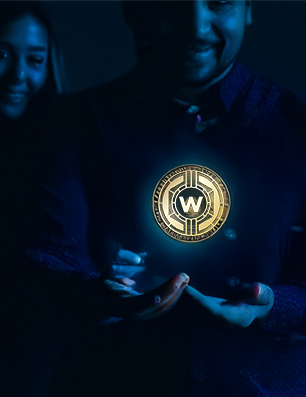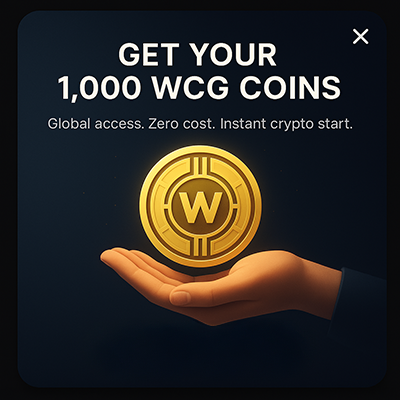- Written by: Sophie Roots
- Thu, 15 May 2025
- Czech Republic
The crypto sector has over 20,000 assetsand most people still cant tell a token from a coin. Blame the physical coins shown in every image...The post Token vs. Coin: Key Differences You Must Know as a Beginner appeared first on Cryptocurrency News & Trading Tips Crypto Blog by Changelly.
Token vs. Coin: Key Differences You Must Know as a Beginner
The crypto sector has over 20,000 assetsand most people still cant tell a token from a coin. Blame the physical coins shown in every image related to crypto. But the difference between coins and tokens isnt just visualit affects how you buy, send, and store them. Lets clear it up.
Why the Difference Matters
In crypto, not knowing the difference between coins and tokens is like showing up at the airport with a bus ticketit means youre not going anywhere.
Lets say you want to send a token somewhere. You have the token but now you need a whole other crypto just to pay the fee. This is because token transactions require their blockchains native coin to pay fees. Or maybe youre setting up a wallet, only to learn your asset runs on a different network. Or maybe you select the wrong chain during a crypto purchase. Well, say goodbye to your funds.
Heres the deal: coins build the roads, tokens ride on them. Thats why you need ETH to send a tokenit pays the toll. And why five different tokens on Ethereum all pull fees from the same coin. Skip that step, and youre stuck in the slow lane with no gas.
This mix-up happens all the time. People think theyre buying coins, but end up holding tokensand vice versa. Remember: not all coins are alike, and not every token acts the same. Learn the difference once, and youll save yourself a lot of confusionand probably a few wasted transactions.
What Are Cryptocurrency Coins?
Cryptocurrency coins are digital assets that run on their own blockchain. Theyre the native virtual currency of the network they power. For example, Bitcoin (BTC) operates on the Bitcoin blockchain, and Ether (ETH) runs on the Ethereum blockchain. These coins exist as part of the core of blockchain technologythey dont just use it, they are it.
Coins fungible, divisible, portable, and often scarce. Bitcoin has a fixed supply of 21 million, which adds to its value. Coins like Bitcoin Cash, Litecoin, and Monero were designed for payments. You can send them peer-to-peer without needing banks or third parties.
Some coins can do more than just payments. Ether powers the Ethereum networkit pays for gas and runs smart contracts. Coins also secure their networks: miners and validators earn them for verifying transactions. In short, if the asset has its own blockchain, its a coin. Its not just a currencyits the engine that keeps the network running.
Examples of Coins
- Bitcoin (BTC): The first cryptocurrency. Runs on its own chain. Seen as digital gold and used globally.
- Ethereum (ETH): The coin of the Ethereum blockchain. Used for payments and gas fees in apps and smart contracts.
- Binance Coin (BNB): Once a token, now the native coin of BNB Chain. Used to pay network fees.
- Monero (XMR): A privacy-first coin that enables untraceable payments.
All of these are coins because they operate on independent blockchains.
What Are Cryptocurrency Tokens?
Crypto tokens are digital assets that live on existing blockchain networks. They dont have their own chaintokens rely on already existing platforms like Ethereum, Solana, or BNB Chain for infrastructure.
So, if a project launches a digital asset without building a blockchain, that asset is a token. Think of a token as a passenger, and the blockchain is the train it rides on.
The most popular token platform is Ethereum, where developers use smart contracts to create fungible tokens (ERC-20) and NFTs (ERC-721).
Tokens serve many purposes. Some work like currency within apps or games. Others give you access, voting rights, or rewards. They include utility tokens, governance tokens, security tokens, stablecoins, and NFTseach with a specific role. Tokens derive their function and security from their host network. Theyre flexible and fast to deploy.
Unlike coins, tokens dont need miners. Their transactions are confirmed by the blockchain theyre built on. For example, sending a token on Ethereum uses ETH to pay feesnot the token itself. Anyone can launch a token with some code and a smart contract. Thats why Ethereum alone has tens of thousands of them.
Examples of Tokens
- Uniswap (UNI): The native token for the Uniswap protocol on Ethereum. It gives holders the power to vote on updates.
- Chainlink (LINK): A token used to pay Chainlinks oracle nodes. It exists on different chains, including Ethereumtheres no separate Chainlink chain.
- Tether (USDT): A stablecoin on Ethereum, Tron, and other chains. Pegged to the dollar, its used for trading and transfers. There is no Tether blockchain.
- Basic Attention Token (BAT): A utility token inside the Brave browser. Users earn BAT for watching ads and tipping creators.
- Decentraland (MANA): An ERC-20 token used to buy virtual land and goods in the metaverse.
- NFTs: Non-fungible tokens represent unique assets like art, game items, or collectibles. Each one is a one-of-a-kind tokenunlike coins, theyre not interchangeable.
These tokens show how projects can build value without starting a blockchain. Tokens run on existing chains, powering everything from governance to gaming.
Coins vs Tokens: Core Differences
Coins and tokens are both cryptocurrencies, but they work in different ways. Heres a breakdown of the difference between coins and tokens:
As you can see, coins form the base layer of blockchain ecosystems, while tokens are built on top. Coins often hold more intrinsic value, while tokens offer more flexible use cases.
Use Cases: How Coins and Tokens Are Used
Coins and tokens both serve essential roles in the crypto ecosystem, but theyre used in very different ways.
Coins as Digital Money and Network Fuel
Coins work like digital money. You can spend, transfer, or save them, just like traditional fiat currency. For instance, Bitcoin is accepted by some retailers, and Litecoin is used for fast, low-fee remittances.
In El Salvador, Bitcoin became legal tender in 2021highlighting its use beyond trading. In the U.S., President Donald Trump signed an executive order in March 2025 to establish a Strategic Bitcoin Reserve, utilizing over 200,000 BTC already held by the federal government. This move aims to position Bitcoin as a national reserve asset, akin to gold or oil.
Coins are also a store of value. Many users hold BTC or ETH long-term, hoping for appreciation, similar to how people treat gold. But coins arent just about saving or spendingthey also power their native networks. Ether (ETH) pays for every action on the Ethereum blockchain. BNB is used to cover fees on Binances chains and offers perks within the Binance ecosystem.
In short, coins are the backbone of blockchain operations. They enable peer-to-peer payments, run decentralized apps, and serve as trading pairs for other assets.
Tokens for Governance, Access, and Utility
Tokens offer more targeted functions. Some, like Uniswaps UNI, give users governance rightsyou help shape the protocols future by holding them. Many DeFi platforms (e.g., MKR, COMP) issue similar governance tokens.
Other tokens offer utility inside specific apps. The Basic Attention Token (BAT) powers the Brave browsers ad model: advertisers pay in BAT, users earn it by viewing ads. In games and metaverse apps, tokens like MANA act as in-game currency or let you buy virtual land.
Tokens arent just internal currenciesthey enable users to participate, vote, and unlock features in a project. Their value is tied to the product they support.
Tokens as Asset Wrappers and Collectibles
Some tokens are built to represent external assets. Stablecoins, such as USD Coin (USDC) or Tether (USDT), are pegged to the dollar and used to transfer value without the volatility of other crypto.
In 2024, Tron alone moved trillions in USDTshowing how tokens now compete with traditional payment networks.
Other tokens can represent ownership. Security tokens are backed by real assets like stocks or real estate. These bring regulation and transparency to crypto investing. Then, there are NFTsnon-fungible tokens that give artists and creators new ways to sell art, music, and collectibles. Each NFT is unique and tied to a blockchain like Ethereum or Solana.
Blending Use Cases
Tokens & coins often work together. You might use ETH (a coin) to pay for gas on Ethereum, then earn UNI (a token) by providing liquidity on Uniswap. Coins secure and power networks. Tokens unlock features, rights, and ownership.
Together, they expand whats possible in cryptowhether youre making a payment, joining a DAO, trading collectibles, or sending money across the world in an instant.
How to Identify a Coin vs a Token
See a new crypto project? Heres how to tell if its a coin or a token. Use these steps to avoid mix-ups, manage fees, and understand how your crypto fits into the bigger picture.
1. Check the Blockchain
Go to CoinMarketCap or CoinGecko. If it says Platform: Ethereum and shows a contract address, its a token. If it only lists its own blockchain (like Blockchain: Bitcoin for Bitcoin), its a coin. Simply put, coins operate on the blockchains they power. Tokens live on someone elses chain.
2. Use a Blockchain Explorer
Look up the asset on a relevant explorer. If its on Ethereum, you can search Etherscan.io. Tokens will have contract addresses. Coins show up on their own explorers. For example, LINK has a contract on Ethereumso its a token. BTC shows up on Bitcoins native explorerso its a coin.
3. Look at the Fees
If you need a different crypto to cover transaction fees, its a token. For example, sending USDT on Ethereum requires ETH. If the asset pays its own fee (like XRP), its a coin. Token transactions always ride on another coins network.
4. Read the Docs
Terms like ERC-20, BEP-20, or built on Ethereum = token. If the project mentions its own blockchain or mainnet, youre likely looking at a coin. Many tokens come from token sales, initial coin offerings (ICOs), or initial exchange offerings (IEOs)all are built on existing chains.
5. Check the Wallet
If you need to add a custom contract to use an asset in MetaMask or Trust Wallet, its a token. If you need a whole new wallet just for that asset, chances are its a coin.
FAQ
Are Ethereum tokens the same as Ethereum coins?
No, not at all. Ether (ETH) is the native coin of the Ethereum blockchainits the actual digital currency that powers the network. Ethereum tokens are created by third-party projects using smart contracts (like ERC-20 or ERC-721). For example, USDT, LINK, or UNI are all Ethereum-based tokens. They rely on Ethereums network and use ETH for gas.
In short: ETH = coin. Everything else built on Ethereum = token.
Can tokens exist without a coin?
No, this isnt possible. Tokens need blockchain platforms like Ethereum or BNB Chain to functionand those platforms have their own native coins (like ETH or BNB).
Coins secure the network and pay for transactions. Without the coin, the blockchain cant run, and the token has nowhere to live. So even if a project only issues a token, it still relies on a coin-powered network.
Which is safer to invest in: coins or tokens?
It depends on the project. Coins like Bitcoin or Ether are more established and tend to be safer. Tokens can offer higher rewards but come with higher risks, especially if theyre tied to small, unproven projects.
Many scams use tokens because theyre easy to create. That said, some tokenslike stablecoins or major DeFi tokenshave strong track records. Both coins and tokens can be safe or risky depending on their value proposition, real-world use, and the team behind them.
Read also: How to spot crypto scams.
Are all cryptocurrencies either coins or tokens?
Yesevery crypto out there is either a coin or a token. An asset cant be a coin and a token simultaneously. The distinction lies in the infrastructure: coins power blockchains, while tokens depend on them. Every crypto falls cleanly into one category or the other.
Do I need a different wallet for coins and tokens?
Yes, sometimes you do. Wallets are chain-specific under the hood, even if one app supports many assets. Youll need a Bitcoin address for BTC, an Ethereum address for ETH or ERC-20 tokens, and so on.
A wallet that supports Ethereum will handle ETH and any Ethereum tokens. But it wont work for, say, ADAbecause Cardano runs on a different blockchain. Modern wallets often support multiple chains, so you dont need separate appsjust separate accounts within the same wallet.
Can I create my own token or coin?
Yes, you can create both. But be awarethe process is not the same.
Creating a token is fairly simpleyou can launch one on Ethereum with a smart contract. Thats why thousands of tokens exist.
Creating a coin is much harder. It means building and maintaining your own blockchain, plus attracting miners or validators. Most projects choose to create tokens because its cheaper and faster to build on top of an existing chain. Just be aware of legal and technical responsibilities either way.
Disclaimer: Please note that the contents of this article are not financial or investing advice. The information provided in this article is the authors opinion only and should not be considered as offering trading or investing recommendations. We do not make any warranties about the completeness, reliability and accuracy of this information. The cryptocurrency market suffers from high volatility and occasional arbitrary movements. Any investor, trader, or regular crypto users should research multiple viewpoints and be familiar with all local regulations before committing to an investment.
The post Token vs. Coin: Key Differences You Must Know as a Beginner appeared first on Cryptocurrency News & Trading Tips Crypto Blog by Changelly.






